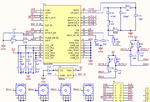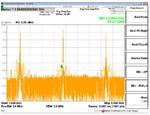khungbopro
Member level 1

I used 50MHz oscillator to make Reference for PLL. But, I didn't use a capacitor AC coupled between Ref and PLL, the DC current from Ref isn't blocked. Please help me to know in detail the influence of DC current to the output frequency !?!
Thank you!
Thank you!






